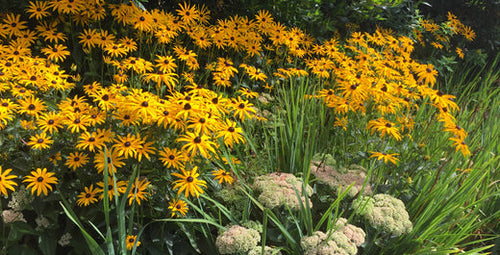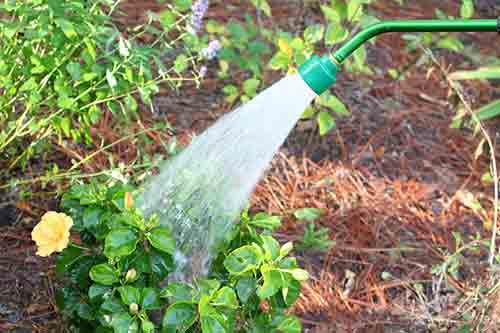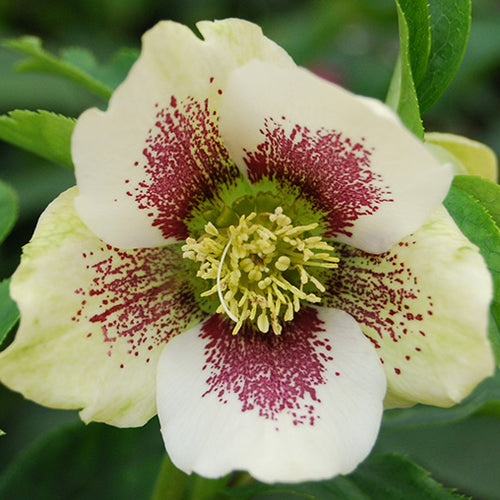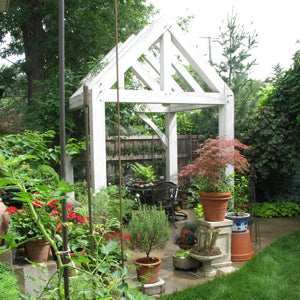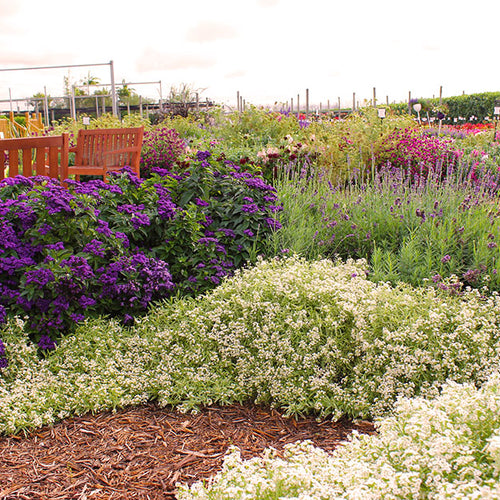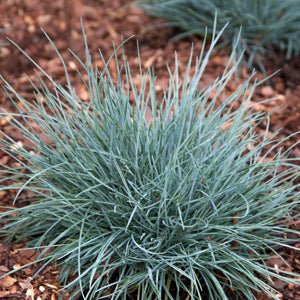 By Doug Jimerson
By Doug Jimerson
No shade garden is complete without hostas. These leafy beauties come in a wide range of sizes, shapes, and colors that can transform a barren shady patch into a tranquil Eden.
But, too often, these versatile perennials are taken for granted, planted en masse simply because they are an easy answer to shady problems. With a little careful planning, hostas can take on starring roles in a variety of ways.
Check out these different ways to put hostas to work in your garden.
Interplant Hostas
Don’t let hostas do all the hard garden work on their own. Instead, mix them with other shade-dwelling perennials such as lungwort, ajuga, lamium, pachysandra, bleeding heart, and forget-me-not.
Dig into more easy-care, shade-loving perennials.
Make Hostas the Center of Attention
Sometimes a single hosta can have more impact than an entire border. Large-leaved varieties, in particular, are absolutely stunning when used as “thriller” plants in big tubs and planters. We found the gorgeous combination, left, on the street in Bellevue, Washington, where the big patterned hosta leaves provide an umbrella of color over a mixed bag of coleus.

Move Hostas Out Front
There’s no reason to keep your hostas in a secluded spot in the back garden. Why not show off your favorite hostas by planting them out front where the whole world can enjoy them? And what better place to plant hostas than under tall trees in the “parking” bed wedged between the sidewalk and the curb.
Plus, hostas are tough, so any errant foot traffic might trample them temporarily, but they’ll quick bounce back. And once established, they don't mind growing in amongst tree roots.
Here, few hostas and Allium senescens glaucum flank a piece of stone art along the street in Minneapolis. What a great way to create curb appeal!

Let Hostas Stand Alone
Big, bold-leafed varieties of hosta such as 'Sum and Substance', shown here, are striking enough to hold their own even when planted singly.
Think of them as living pieces of art you can drop into the garden wherever you need dependable, eye-catching color and texture.
Other plus-size hosta varieties include: 'Bressingham Blue', 'City Lights', 'Northern Exposure', 'Regal Splendor', and 'Winter Snow'.
See our Guide for Buying Hostas to discover the best ones for your yard.

Line a Path or Walkway
Low- and medium-height hosta varieties excel as edging plants along a garden path. They maintain their colorful foliage from spring through fall and they never outgrow their space and spread out into the pathway.
In the Iowa border, left, a conga line of 'Minuteman' hostas dance along the edge of a brick walkway. Other members of the hosta chorus include 'Frances Williams', 'Revolution', and 'Fire and Ice'.
Make More Hostas
One of the nice things about hostas is how easy they are to propagate so you can make even more plants to use in other ways around your landscape.
The best time to dig and divide perennials, such as hostas, is in the early spring, just as they are breaking dormancy, but you can just as easily propagate them in summer and fall, too. Use a sharp spade and lift an entire hosta clump at one time and then, using that same spade or a large knife, cut the hosta into sections. Just be sure each section has at least one or two stems with roots attached. Replant as soon as possible at the same depth they were growing previously and add water. It’s that easy!
Do you want to learn more about hostas? Here are 5 reasons to grow them in your yard.
Written by Justin Hancock










